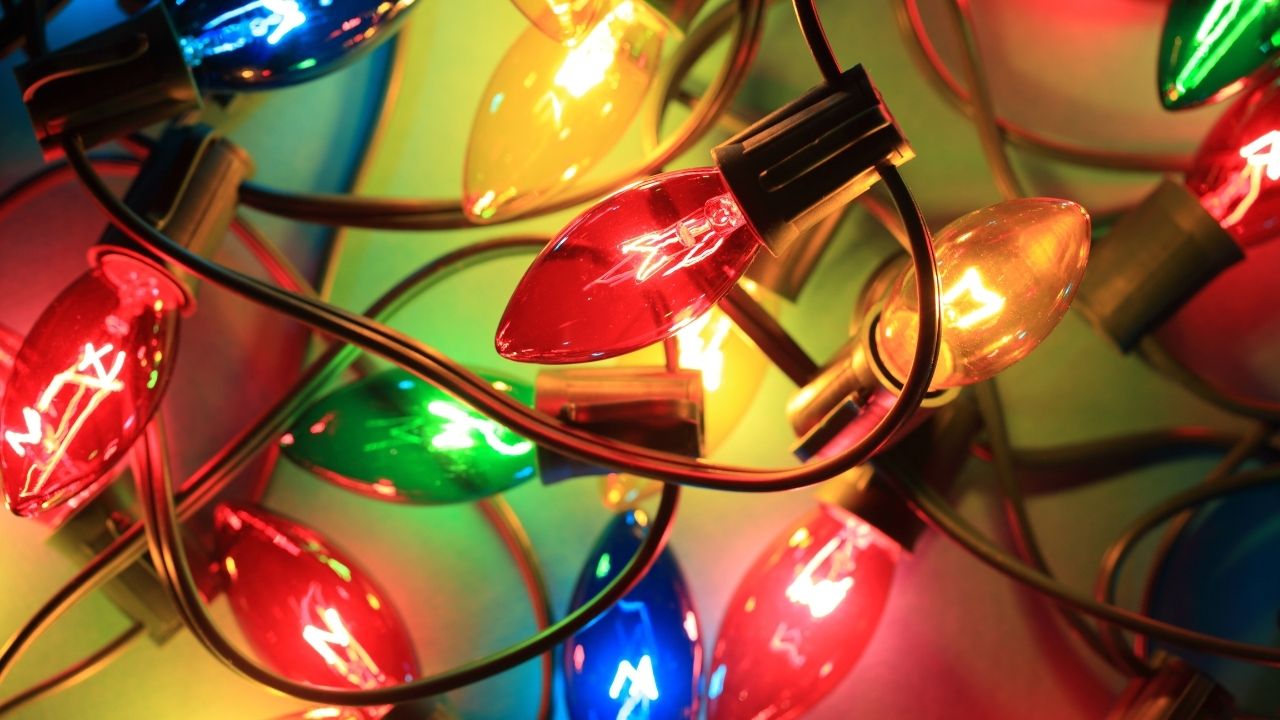
Holiday lights bring magic to the season, transforming homes and streets into sparkling wonderlands. Ever wondered about the history and fun facts behind these twinkling decorations? Holiday lights have a rich past, from their origins in 17th-century Germany to the dazzling displays we see today. Did you know that the first electric Christmas lights were invented by Thomas Edison’s assistant, Edward H. Johnson, in 1882? Or that the world's largest Christmas light display features over 1.2 million lights? Whether you’re a fan of classic white bulbs or colorful LED strands, these glowing decorations have fascinating stories to tell. Ready to brighten your knowledge on holiday lights? Let’s dive into 28 illuminating facts!
Key Takeaways:
- Holiday lights have a rich history, evolving from candles to electric bulbs. They hold cultural significance in various traditions and come with fun facts, but it's important to use them safely and consider their environmental impact.
- From the Yule log to smart lights, holiday illuminations have come a long way. They're not just for trees; people use them creatively to spread festive cheer. Remember to stay safe and eco-friendly when using holiday lights!
The History of Holiday Lights
Holiday lights have a rich history that dates back centuries. From candles to electric bulbs, these twinkling decorations have evolved significantly.
- The tradition of using lights during holidays started with the Yule log in ancient winter solstice celebrations.
- In the 17th century, Germans began decorating Christmas trees with candles.
- Thomas Edison created the first strand of electric holiday lights in 1880.
- Edward H. Johnson, Edison’s associate, displayed the first electrically lit Christmas tree in 1882.
- By the early 20th century, electric holiday lights became more accessible to the public.
Evolution of Holiday Lights
The technology and design of holiday lights have changed dramatically over the years. Let's explore how these festive illuminations have transformed.
- The first mass-produced Christmas lights were introduced by General Electric in 1903.
- Miniature lights, or "mini lights," became popular in the 1970s.
- LED holiday lights, which are more energy-efficient, were introduced in the 1990s.
- Today, smart holiday lights can be controlled via smartphone apps.
- Solar-powered holiday lights are becoming increasingly popular for their eco-friendliness.
Cultural Significance of Holiday Lights
Holiday lights hold different meanings and significance in various cultures around the world. They symbolize joy, hope, and celebration.
- In Hinduism, Diwali, the festival of lights, involves lighting oil lamps to signify the victory of light over darkness.
- Hanukkah, the Jewish Festival of Lights, includes lighting the menorah for eight nights.
- In Sweden, St. Lucia Day is celebrated with processions of children wearing white robes and candlelit wreaths.
- Kwanzaa, an African-American holiday, features the lighting of the kinara, a seven-branched candleholder.
- In the Philippines, the Giant Lantern Festival showcases elaborate lanterns made from various materials.
Fun Facts About Holiday Lights
Holiday lights are not just beautiful; they come with some fascinating trivia. Here are some fun facts that might surprise you.
- The world's largest Christmas light display was set up in Canberra, Australia, with over 1.2 million lights.
- The most expensive Christmas tree ever decorated with lights was valued at $11 million in Abu Dhabi.
- The tradition of lighting up the Rockefeller Center Christmas tree in New York City began in 1933.
- The Guinness World Record for the most lights on a residential property is held by a family in New York with over 601,736 lights.
- The White House has its own Christmas tree lighting ceremony, a tradition started by President Calvin Coolidge in 1923.
Safety and Environmental Impact
While holiday lights bring joy, they also come with safety and environmental considerations. It's important to be mindful of these aspects.
- Overloading electrical circuits with holiday lights can cause fires; always follow safety guidelines.
- LED lights use up to 80% less energy than traditional incandescent bulbs.
- Recycling old holiday lights can prevent them from ending up in landfills.
- Some cities offer holiday light recycling programs to reduce waste.
- Using timers for holiday lights can save energy and reduce electricity bills.
Creative Uses of Holiday Lights
Holiday lights aren't just for decorating trees. People use them in various creative ways to add a festive touch to their homes and communities.
- Holiday lights can be used to create stunning outdoor displays, including light tunnels and synchronized light shows.
- Some people use holiday lights to spell out messages or create themed decorations.
- In some neighborhoods, entire streets coordinate their holiday light displays for a unified, dazzling effect.
Brightening the Season
Holiday lights have a rich history and cultural significance. From their origins in Germany to the dazzling displays in modern cities, these lights bring joy and warmth to millions. They symbolize hope, unity, and celebration. Whether you're stringing up lights on your tree or driving through a neighborhood light show, you're part of a long-standing tradition.
LED lights have made decorating more energy-efficient and affordable. Innovations like smart lights and synchronized displays keep the tradition fresh and exciting. Remember, safety first—always check your lights for damage and follow guidelines to prevent accidents.
Holiday lights aren't just decorations; they're a way to connect with others and spread cheer. So, next time you see those twinkling lights, think about their history and the joy they bring. Happy decorating!
Frequently Asked Questions
Was this page helpful?
Our commitment to delivering trustworthy and engaging content is at the heart of what we do. Each fact on our site is contributed by real users like you, bringing a wealth of diverse insights and information. To ensure the highest standards of accuracy and reliability, our dedicated editors meticulously review each submission. This process guarantees that the facts we share are not only fascinating but also credible. Trust in our commitment to quality and authenticity as you explore and learn with us.
